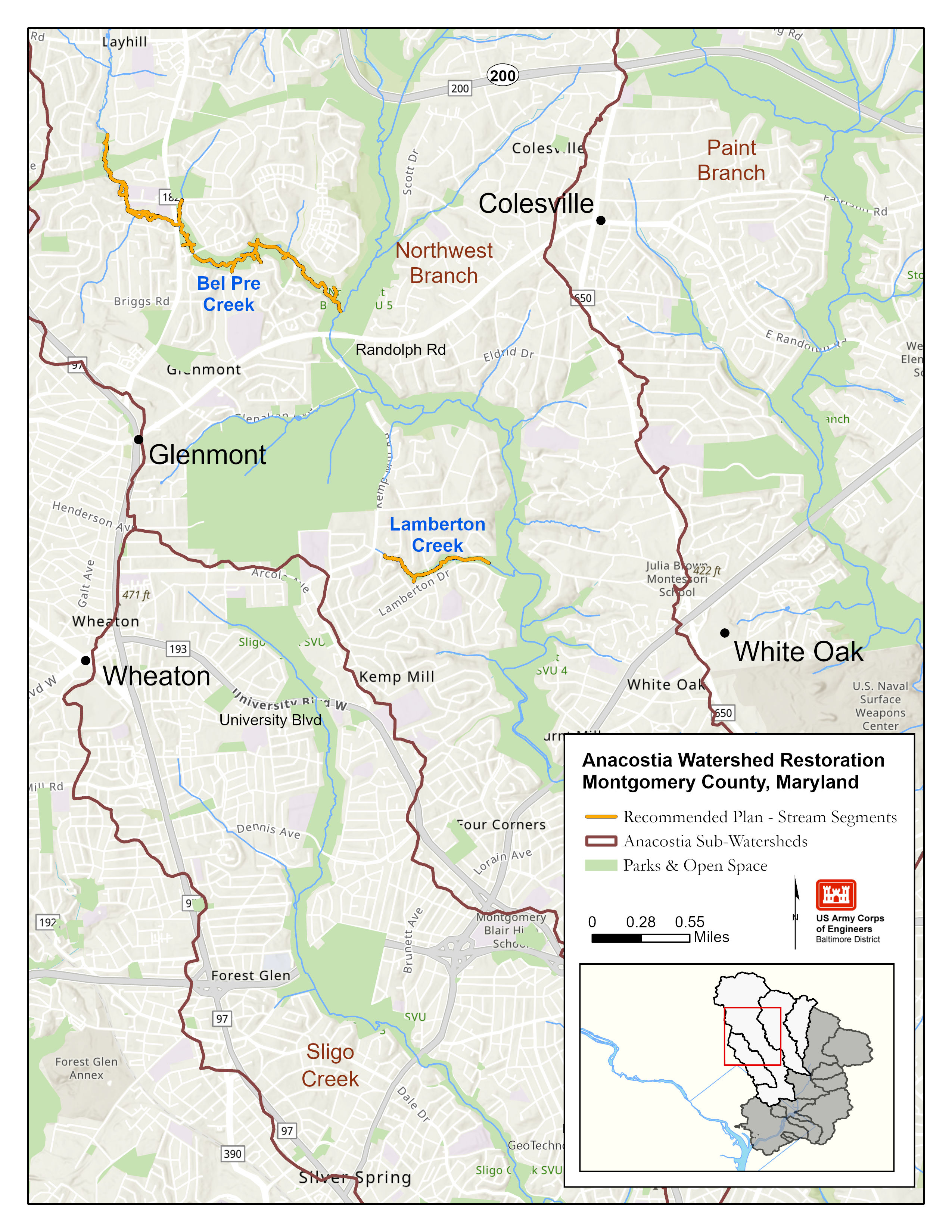Montgomery County
The drainage of the Anacostia River within Montgomery County is approximately 61 square miles, accounting for about one-third of the total Anacostia River watershed. The Anacostia River flows through Maryland and then the District of Columbia into the Potomac River; the river ultimately drains to the Chesapeake Bay. Anacostia River sub-watersheds largely within Montgomery County include Sligo Creek, Northwest Branch, Paint Branch, and Little Paint Branch. The watershed in Montgomery County falls primarily within the Piedmont physiographic province. However, along the county’s border with Prince George’s County, small sections of the streams lie within the Coastal Plain province. The Piedmont province is characterized by gently rolling to hilly topography separated by drained fertile valleys and narrow stream valleys, with elevations ranging from 200 to 570 feet above mean sea level. Streams are generally low to moderate gradient and are composed of coarser bed material, such as gravel or cobble. The very lower end of the watershed is in the Coastal Plain province, which is somewhat flatter and has lower gradient streams with finer bed materials.
Project Study Area
The Recommended Plan includes Bel Pre Creek and Lamberton Creek, which largely flow through forested parkland but are incised and have degraded instream habitat. The streams have reduced stream/floodplain connection from conditions several decades ago, causing loss of ecosystem function and floodplain wetlands habitats. Water quality and habitat in the Anacostia River watershed are degraded as a result of anthropogenic alterations to the natural landscape. Additionally, fish blockages in the watershed prevent movement of resident and catadromous fish.

Bel Pre
The Bel Pre tributary stream segment is roughly 2.5 miles long. The Bel Pre tributary mainly has problems with erosion, trees uprooting, sediment loading, and lack of flood plain connectivity. The project at the Bel Pre tributary would realign parts of the channel to better convey the flow and reduce erosion, improve fish passage, and increase flood plain connectivity (including wetland areas).
Lamberton
The Lamberton tributary stream segment is roughly .7 miles long. The Lamberton tributary mainly has problems with lateral erosion and tree uprooting. The project at the Lamberton tributary would correct lateral movement and erosion and improve fish passage.